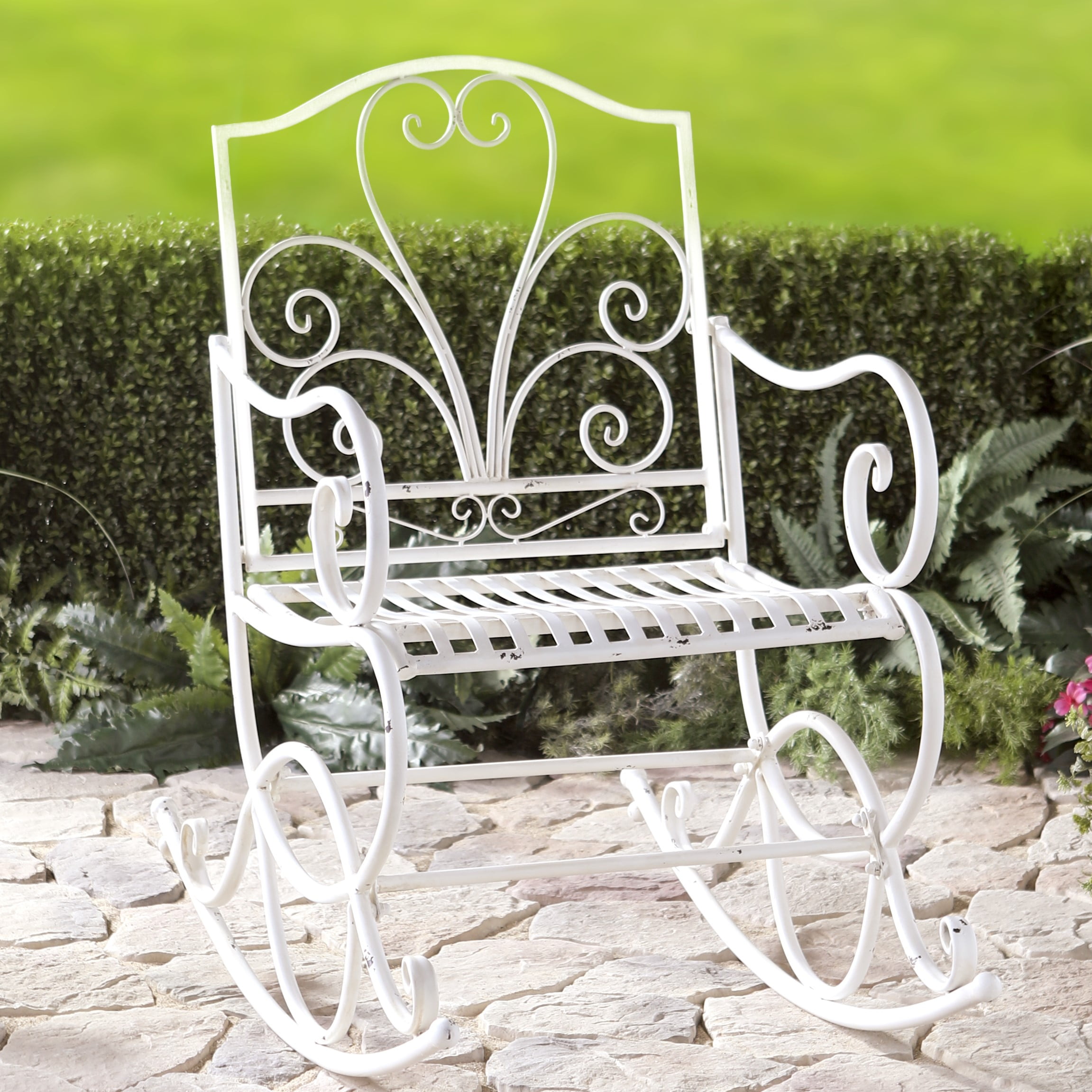The Allure of Wrought Iron Rocking Chairs

Wrought iron rocking chairs, with their enduring strength and timeless elegance, have captivated homeowners for centuries. These chairs, a testament to both artistry and engineering, have evolved from humble beginnings to become cherished heirlooms, embodying a rich history and unparalleled charm.
Historical Significance
Wrought iron rocking chairs trace their origins back to the 18th century, emerging alongside the burgeoning popularity of rocking chairs in the United States. Early examples were often simple in design, with straight backs and arms, showcasing the inherent beauty of the wrought iron material. Over time, artisans began incorporating intricate details, such as scrollwork, floral motifs, and decorative accents, reflecting the evolving tastes of the era. These chairs became a symbol of comfort, hospitality, and the American spirit, gracing porches, gardens, and living rooms across the nation.
Craftsmanship
The creation of a wrought iron rocking chair is a meticulous process that demands both skill and artistry. Skilled blacksmiths heat the iron to a malleable state, shaping it with hammers and specialized tools. Each curve, twist, and detail is painstakingly crafted, resulting in a chair that is both sturdy and aesthetically pleasing. The intricate designs often feature traditional motifs, such as floral patterns, scrolls, and geometric shapes, showcasing the blacksmith’s craftsmanship and attention to detail.
Comparison to Other Types of Rocking Chairs
Wrought iron rocking chairs offer a unique blend of durability, style, and comfort, setting them apart from other types of rocking chairs. Compared to wooden rocking chairs, wrought iron chairs are more resistant to weather elements, making them ideal for outdoor use. Their heavier weight provides stability and a gentle rocking motion, creating a sense of security and tranquility. While wooden rocking chairs may offer a more rustic or traditional aesthetic, wrought iron chairs exude a timeless elegance and sophistication that complements a wide range of décor styles.
Design and Style Variations: Wrought Iron Rocking Chair

Wrought iron rocking chairs offer a wide array of design styles, each reflecting different historical periods and aesthetic preferences. From the intricate flourishes of Victorian designs to the sleek lines of contemporary styles, these chairs embody a spectrum of artistic expression.
Victorian Era
Victorian wrought iron rocking chairs are characterized by their elaborate ornamentation and intricate details. They often feature scrollwork, floral motifs, and delicate curves. The use of black wrought iron against a backdrop of pastel colors was a hallmark of this era.
“Victorian wrought iron rocking chairs are often considered a testament to the craftsmanship and artistic sensibility of the time.”
Examples of iconic Victorian wrought iron rocking chairs include those designed by the renowned furniture maker, [Name of designer]. These chairs were known for their [specific characteristics].
Art Deco, Wrought iron rocking chair
Art Deco wrought iron rocking chairs emerged in the 1920s and 1930s, reflecting the era’s fascination with geometric shapes, bold colors, and streamlined forms. These chairs often feature geometric patterns, angular lines, and a more minimalist approach to ornamentation.
“Art Deco wrought iron rocking chairs epitomize the era’s embrace of modernity and geometric aesthetics.”
A notable example of an Art Deco wrought iron rocking chair is the [Name of chair], designed by [Name of designer]. This chair is known for its [specific characteristics].
Contemporary Styles
Contemporary wrought iron rocking chairs embrace modern design principles, emphasizing clean lines, simplicity, and functionality. They often feature minimalist designs, sleek curves, and a focus on comfort.
“Contemporary wrought iron rocking chairs reflect a minimalist aesthetic, prioritizing comfort and functionality.”
Examples of contemporary wrought iron rocking chairs include those designed by [Name of designer], known for their [specific characteristics].
Key Features and Characteristics
| Style | Key Features | Characteristics |
|---|---|---|
| Victorian | Elaborate ornamentation, intricate details, scrollwork, floral motifs, delicate curves | Exuberant, romantic, intricate, often featuring pastel colors |
| Art Deco | Geometric patterns, angular lines, streamlined forms, minimalist ornamentation | Bold, geometric, streamlined, often featuring metallic accents |
| Contemporary | Clean lines, simplicity, functionality, minimalist designs, sleek curves | Modern, minimalist, functional, often featuring neutral colors |
The wrought iron rocking chair creaked gently, a rhythmic sound that seemed to whisper secrets only the old house could understand. Its cold, metallic embrace felt oddly comforting, as if it held the weight of countless memories. Perhaps, I thought, it could even tell me about the Kahuna SM-9000 massage chair, a modern marvel that promises a luxurious spa experience right in your home kahuna sm 9000 massage chair.
But the rocking chair remained silent, its secrets locked away, just as the past is always locked away in the heart of an old house.
The wrought iron rocking chair creaked softly, its aged metal sighing with each gentle sway. A faint, almost imperceptible vibration hummed through the floorboards, a ghostly echo of something unseen. Perhaps it was a reminder of the chair’s long history, of whispers shared in its shadowed embrace.
Or maybe it was a message from the past, urging me to seek out something more, something that could soothe the aching in my weary bones. I remembered a recent online search for a oakworks massage chair craigslist , and the peculiar sense of familiarity that accompanied it.
Perhaps that was the answer, a modern-day comfort to replace the antique chair’s creaking embrace.